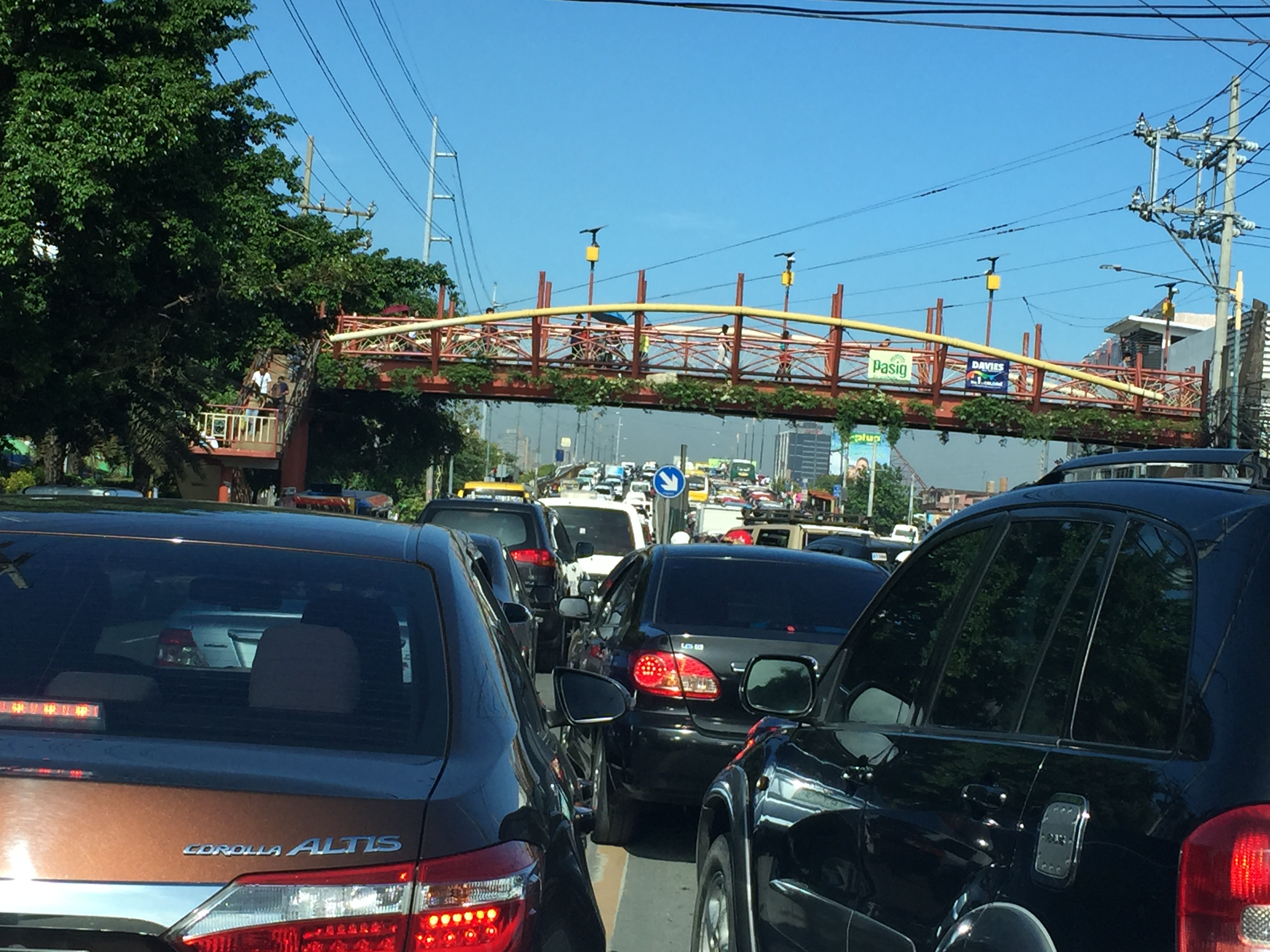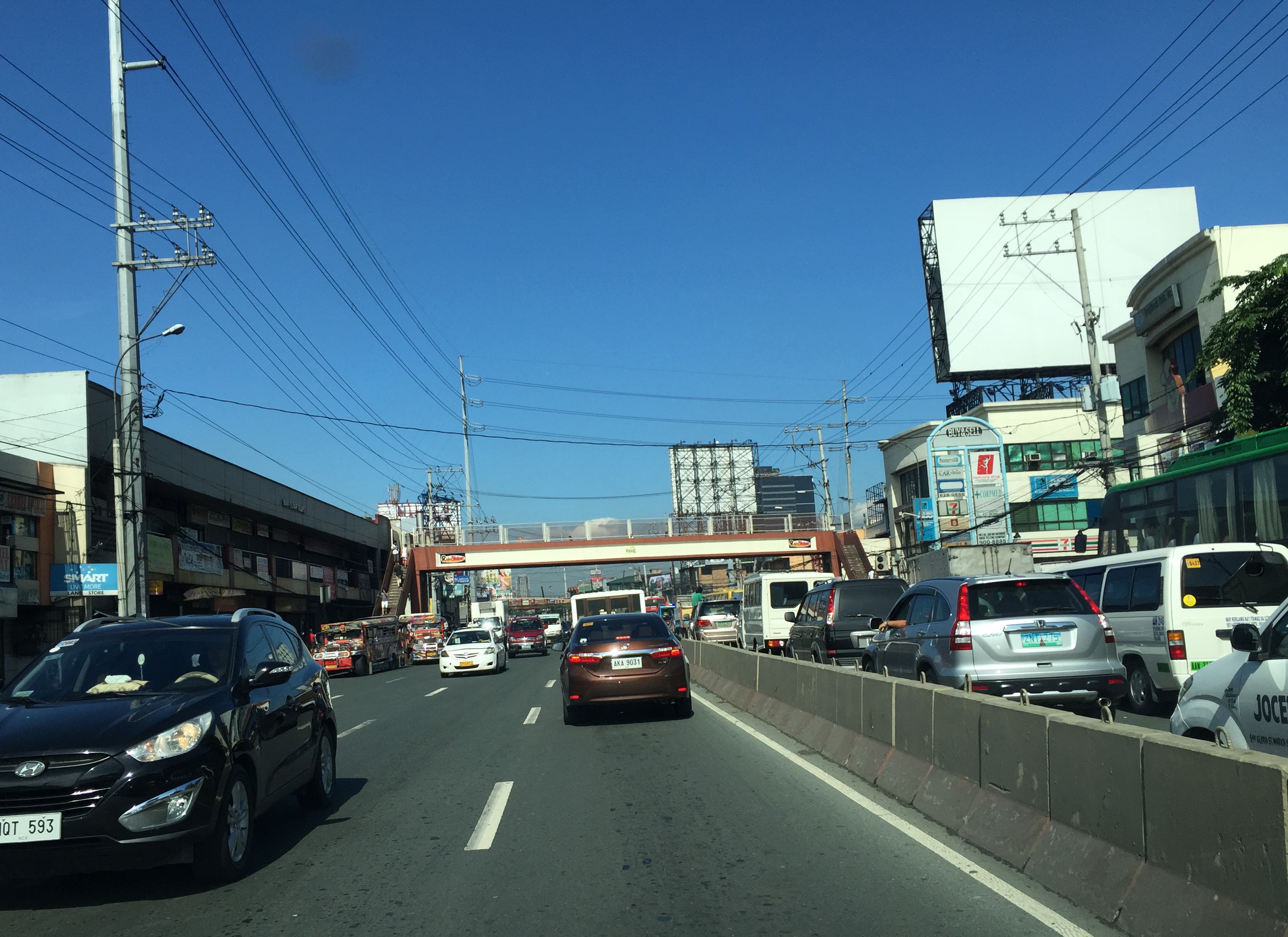Here are some more recent photos of the morning traffic congestion
and counter-flow scheme along Ortigas Avenue. The counterflow scheme
starts at the approach to the Manggahan Channel Bridge and ends at the
approach to C-5 right after the Rosario Bridge. This counter-flow scheme has been used by Pasig, as far as I can remember, since the early 1980s. Ortigas Avenue is one of those roads where the directional distribution of traffic very pronounced for the peak direction.
 |
| Vehicles crowding towards the counter-flow lane on the eastbound side of Ortigas Avenue. |
Traffic along this lane is moving, unlike the standstill you
will likely experience along the westbound side. This is particularly
true at the bridge where buses and jeepneys occupy two lanes and stop
for long periods to get passengers. Congestion is exacerbated by
vehicles coming out of the residential development in the area. Pasig
and MMDA traffic enforcers fail miserably at their duties here. Perhaps
this is a job for the PNP-HPG?
 |
| Flowing traffic along the counter-flow lane - note the standstill on the other side |
The
effort of positioning towards the counter-flow lane is worth it as
traffic moves faster here. The argument for counter-flow lanes (or
zipper lanes as they are also called) is based on the availability of
capacity along traffic lanes of the opposing direction that can be used
to optimize utility of these unused lanes (i.e., off-peak direction) by
peak traffic. This is a classic transport systems management scheme
directed towards efficient and optimum use of existing facilities.
-
No comments:
Post a Comment